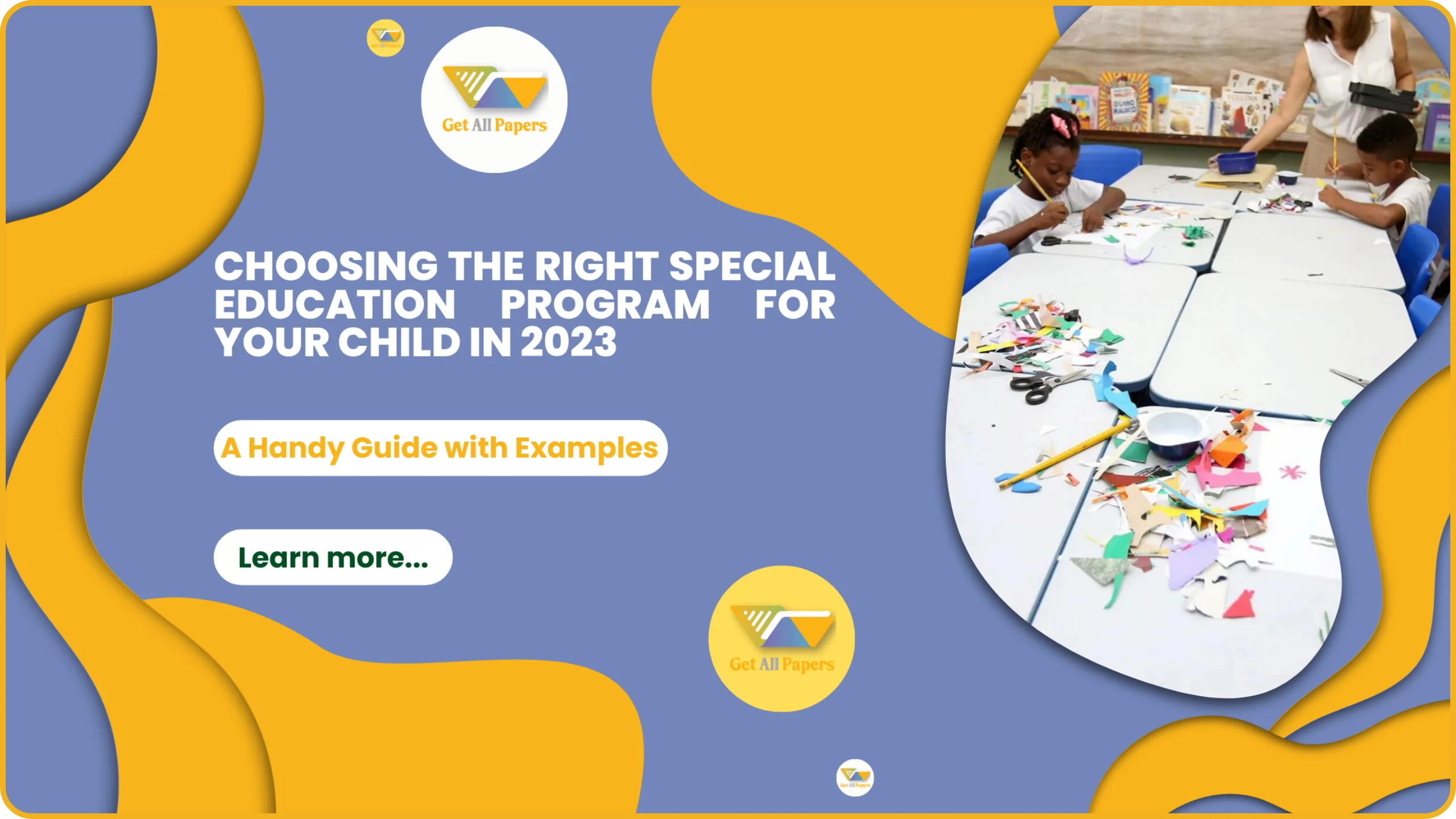
Choosing the Right Special Education Program for Your Child in 2023
Written By: Andrew H. Austin
Published On: Oct 5th,2023
Introduction
In the world of education, the options available for parents and caregivers seeking the best educational experience for their children are vast and diverse. From traditional public schools to charter schools, homeschooling, and online learning, there's a myriad of choices. However, when it comes to children with special needs, the decision becomes even more critical. Finding the right special education program can significantly impact a child's development and future prospects. In this informative essay, we will explore the factors to consider when choosing a special education program for your child in 2023.
Understanding Special Education Programs
Before diving into the process of selecting the right special education program, it's essential to understand what these programs entail. Special education programs are designed to meet the unique needs of students with disabilities. These programs aim to provide tailored instruction and support to help children overcome challenges related to their disabilities and reach their full potential.
Special education programs encompass a wide range of services, including speech therapy, occupational therapy, physical therapy, counseling, and academic accommodations. They can be provided within a regular classroom setting or in specialized classes, depending on the child's individual needs.
Now that we have a basic understanding of special education programs, let's explore the steps to make an informed decision.
1. Assess Your Child's Needs
The first and most crucial step in choosing the right special education program for your child is to assess their needs. Every child is unique, and their disability may manifest differently. Begin by consulting with professionals such as pediatricians, psychologists, and educators to obtain a comprehensive evaluation of your child's strengths and weaknesses.
2. Research Different Program Types
Special education programs come in various forms, and it's essential to research the options available in your area. Some common program types include:
- Inclusion Programs: These programs place children with disabilities in regular classrooms alongside their peers. Support services and accommodations are provided to help them succeed academically and socially.
- Resource Programs: In resource programs, students receive instruction and support in a separate classroom while spending part of their day in regular classes.
- Self-contained Programs: These programs place students with disabilities in separate classes or schools, focusing on individualized instruction and therapeutic services.
- Online Special Education Programs: With the advancement of technology, online special education programs have become increasingly popular. These programs provide flexibility and can be an excellent option for children with specific needs or geographical constraints.
3. Consider Your Child's Learning Style
Understanding your child's learning style is crucial when selecting a special education program. Some children may thrive in a more structured and traditional classroom environment, while others may benefit from a more flexible and personalized approach.
4. Visit Schools and Programs
Once you've identified potential special education programs, take the time to visit them. Observing the classrooms, meeting with teachers and staff, and speaking with other parents can provide valuable insights into the program's culture and effectiveness.
5. Review Available Resources
Consider the resources available to your child within each program. This includes not only academic support but also therapies, assistive technology, and extracurricular activities. The availability of these resources can greatly impact your child's overall development.
6. Assess the Program's Track Record
Research the program's track record and success stories. Look for reviews, testimonials, and data on student outcomes. A strong track record of success is often an indicator of a program's quality.
7. Evaluate Accessibility
Consider the program's location and accessibility. Ensure that it's feasible for your family to transport your child to and from the program. Accessibility also includes the availability of transportation services if needed.
8. Consult with Professionals
Seek advice from professional essay writers who specialize in special education, such as educational consultants or special education advocates. They can provide valuable guidance and help you navigate the complex process of selecting a program.
9. Consider Your Child's Social and Emotional Needs
In addition to academics, don't forget to consider your child's social and emotional needs. Special education programs should provide a supportive and inclusive environment where children can build social skills and self-confidence.
10. Involve Your Child in the Decision
Depending on your child's age and cognitive abilities, involve them in the decision-making process. Their input and preferences should be taken into account to ensure they feel comfortable and motivated in their educational setting.
11. Review the Legal Aspects
Familiarize yourself with the legal rights and entitlements of children with disabilities. Understanding the Individuals with Disabilities Education Act (IDEA) and your child's Individualized Education Program (IEP) can help you advocate for your child's needs and ensure they receive appropriate services.
12. Seek Financial Assistance
Special education programs can vary widely in cost, and it's essential to consider your budget. Explore options for financial assistance, such as scholarships, grants, or government programs that may help cover the expenses associated with special education.
Conclusion
In 2023, the landscape of special education programs continues to evolve, offering more diverse and tailored options than ever before. Choosing the right program for your child with special needs is a critical decision that requires careful consideration of their unique abilities, learning style, and social and emotional needs.
Whether you're opting for an inclusion program, a self-contained classroom, or an online special education program, conducting thorough research, visiting schools, and consulting with professionals are essential steps in making an informed decision. Remember that your child's well-being and future success are at the heart of this choice, and by following these steps, you can provide them with the best possible educational experience.
In conclusion, selecting the right special education program is akin to crafting a narrative essay; it involves carefully weaving together various elements to create a compelling story of your child's educational journey. Just as an academic essay requires a well-crafted thesis statement and an argumentative essay necessitates persuasive evidence, your decision should be grounded in a thorough understanding of your child's needs and the available options. By taking these steps and seeking the guidance of professionals, you can embark on a path that leads to a brighter future for your child.
Related Posts







